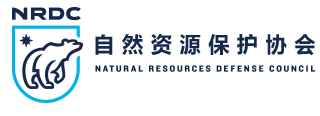Author: Cynthia Wang and Yajing Zhou
Among many global cities, Beijing’s COVID-19 citywide lockdown halted most urban transport activities. Recently, after opening up, bike-share systems in Beijing saw a 150% usership increase as well as an increase in average trip length. These recent biking trends appear to be promising for Beijing’s efforts to promote nonmotorized transportation.
To make bicycling a more attractive, safe, and convenient mode of transport, Beijing inaugurated the first phase of the city’s first dedicated-bicycle highway in May 2019. The partially-elevated, 6.5 km path is three lanes wide, maintains a speed limit of 15 km/hour, and features no traffic lights. It connects the residential area of Huilongguan to Shangdi in Haidian District, a major tech hub home to companies like Baidu, Kuaishou, and Oracle. Serving an average of 11,600 commuters per day during rush hour (13.8% of Haidian’s working population), the bicycle expressway reduces rush hour pressure on Line 13, one of Beijing’s most congested commute metro lines, where it takes more than ten minutes of queuing just to enter the station. The bicycle highway also saves commuters time by cutting the 40-60 min rush hour commute down to an average of 26 minutes.
Later this year, Beijing plans to implement phase two, adding 13 km to the highway, in order to increase accessibility and motivate more commuters to adopt a greener and more convenient form of transportation. The bicycle highway falls in line with Beijing’s 13th Five-Year-Plan to build 3,200 km of pedestrian and bike lanes within the city’s Third Ring Road by the end of 2020. In order to accelerate the development of a pedestrian- and bicycle-friendly city, the Beijing Municipal Institute of City Planning and Design (BICP) took the lead in carrying out a planning study of the second phase of the bicycle highway.
In January 2020, NRDC was invited to contribute to BICP’s design seminars. NRDC conducted field research and provided international case studies to determine challenges facing the first phase of the bicycle highway. These findings and recommendations were then submitted to BICP’s Bicycle Traffic Research Team. NRDC identified two major problems in first bicycle highway: high operation and management costs and weak multimodal transportation integration.
On the first phase of the bicycle highway, much of the budget was spent on the construction of new facilities and the elevated sections that make up around 5.5 km of the 6.5 km road. To optimize spending, the preliminary design for phase two aims to make better use of existing road networks and facilities. It also plans to simplify highway management and decrease road management costs by reducing manning levels.
Phase two will also improve transport intermodality integration by connecting multiple green spaces, parks, universities, and other points of interest along the road. It will account for its longer length by optimizing the placement of entrances and exits to correspond with transportation interchange points. Improving existing rest stop amenities and bicycle parking facilities will also increase the convenience and appeal of this highway and inspire more residents to partake in a greener form of transportation.
To accommodate increases in COVID-19 induced cycling traffic and moderate social distancing, many municipal governments around the world have been funding temporary cycle lanes, street closures, and walkways. Beijing’s new bicycle highway extension can serve as a replicable example to address these recent trends in urban mobility.
NRDC draws on years of thought leadership, urban sustainability research, and stakeholder collaboration to promote nonmotorized transportation in Chinese cities. Since 2015, it has released four issues of reports evaluating Chinese pedestrian walkability environments. Its research aims to promote holistic nonmotorized transportation integration. To further low-carbon transportation and development in Chinese cities, NRDC will continue to offer knowledge-sharing and support to BICP in the construction of phase two of the bicycle highway.


